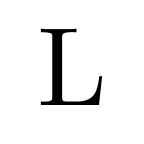
Unicode Stegonography
Stegonography attempts to prevent messages from being read by unintended recipients by hiding the messages rather than (or in addition to) encrypting them. Stegonography is used when you not only want to keep your communication private, you want to hide the fact that you’ve communicated at all.
A famous example of stegonography was a secret message sent by Jeremiah Denton during the Vietnam War. While a prisoner of war, Denton was forced to participate in a Vietnamese propaganda video. He send the word torture by blinking the Morse code for the letters in the word. You can find the video here.
Some alleged examples of stegonography have turned out to be apophenia, looking for patterns where they do not exist. The book The Woman Who Smashed Codes details Elizebeth Smith’s introduction to cryptography, being tasked to find messages hidden in minor variations in Shakespeare’s handwriting that were not there. The book goes on to describe her cryptographic work during WWII, deciphering messages that most certainly did exist.
Incidentally, Elizebeth Smith [2] married fellow cryptographer William F. Friedman. I wrote about Friedman’s index of coincidence a while back.
Leave a Comment
Related Posts
















